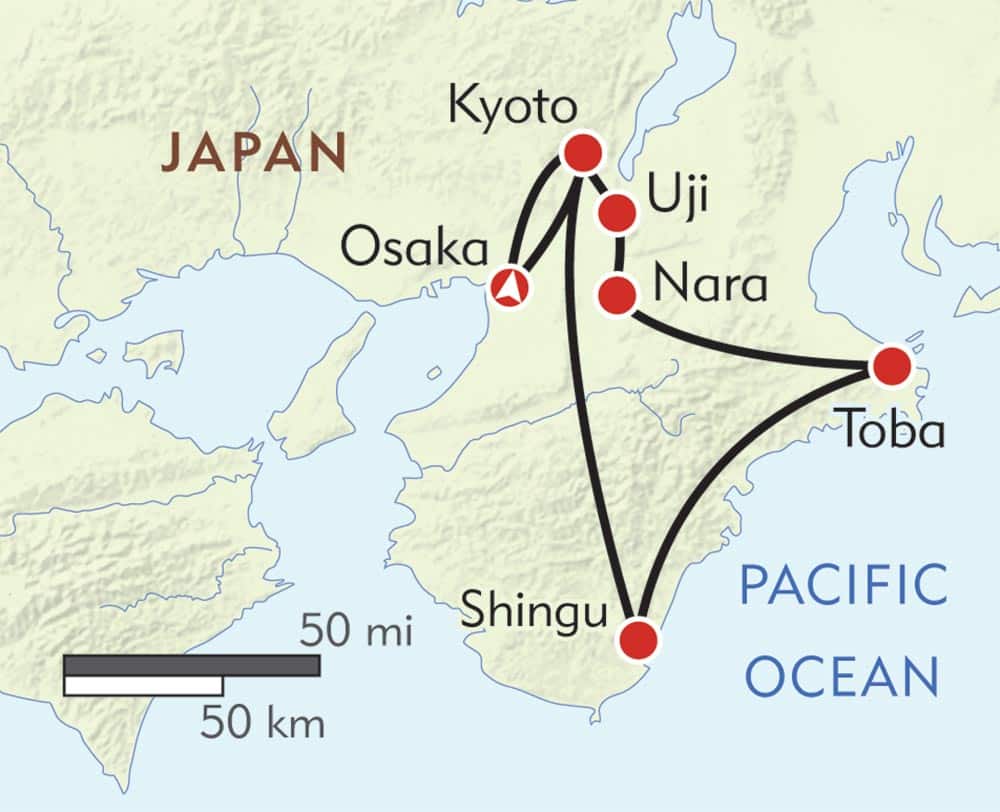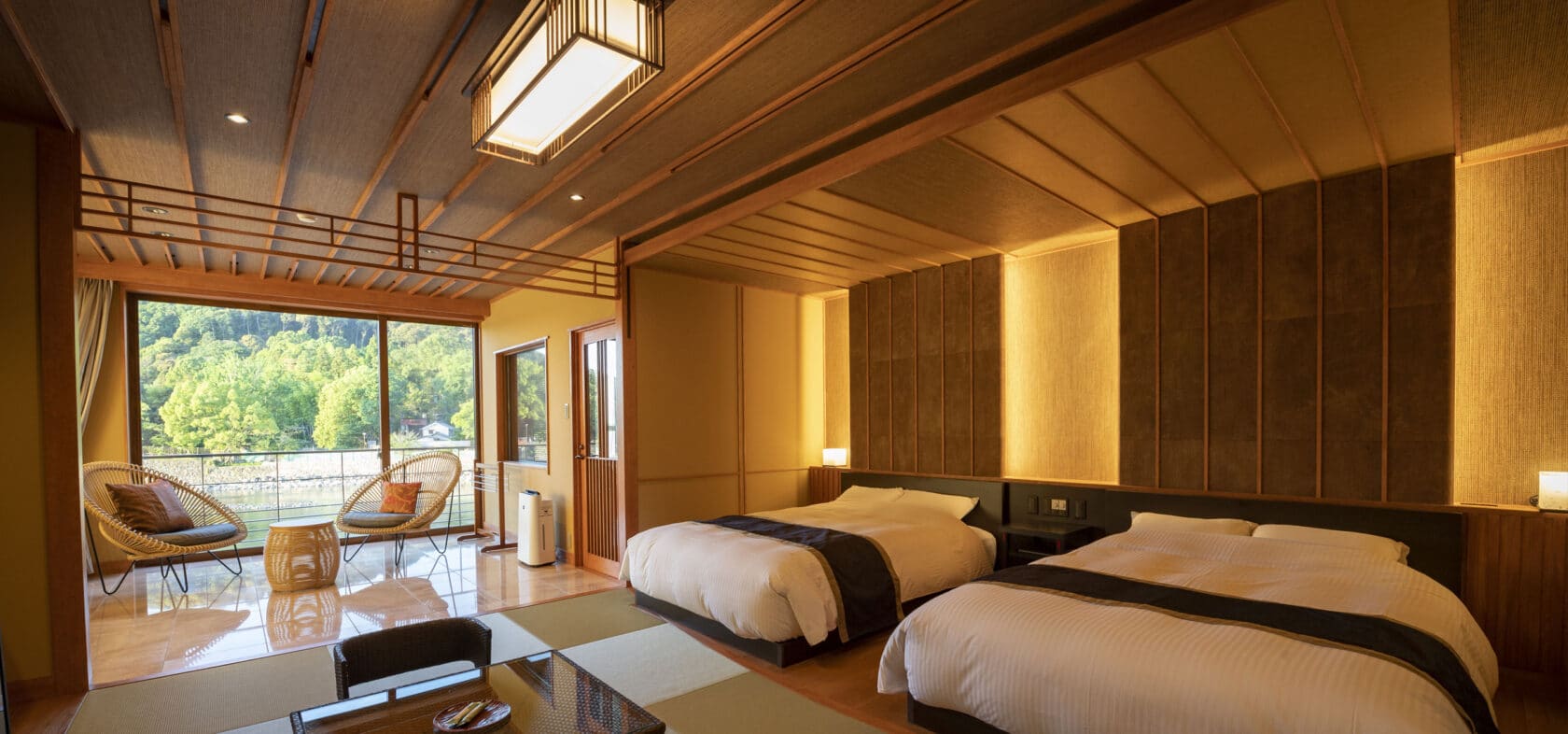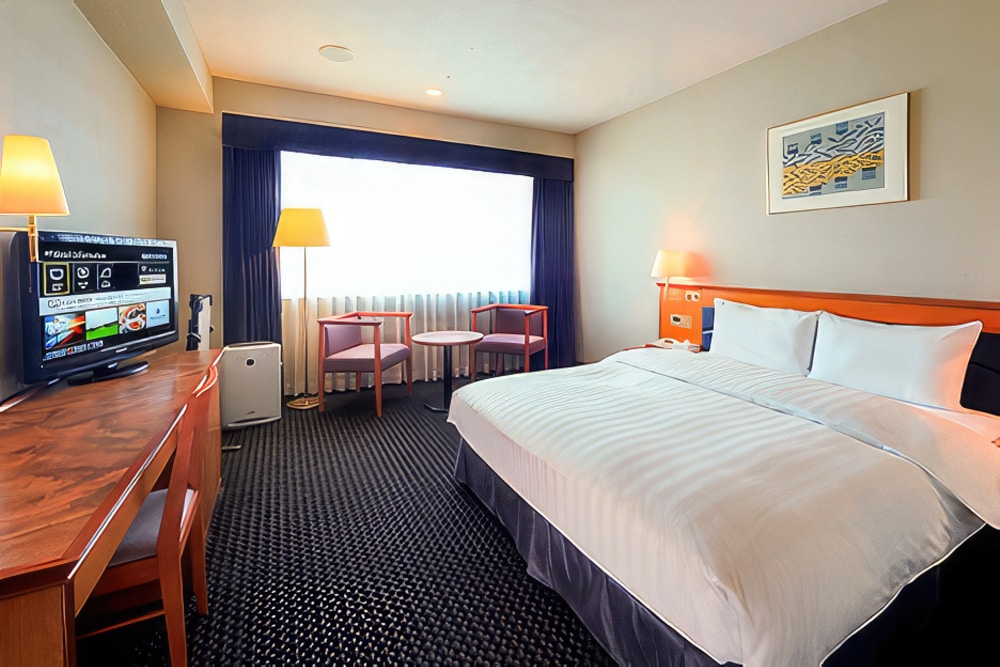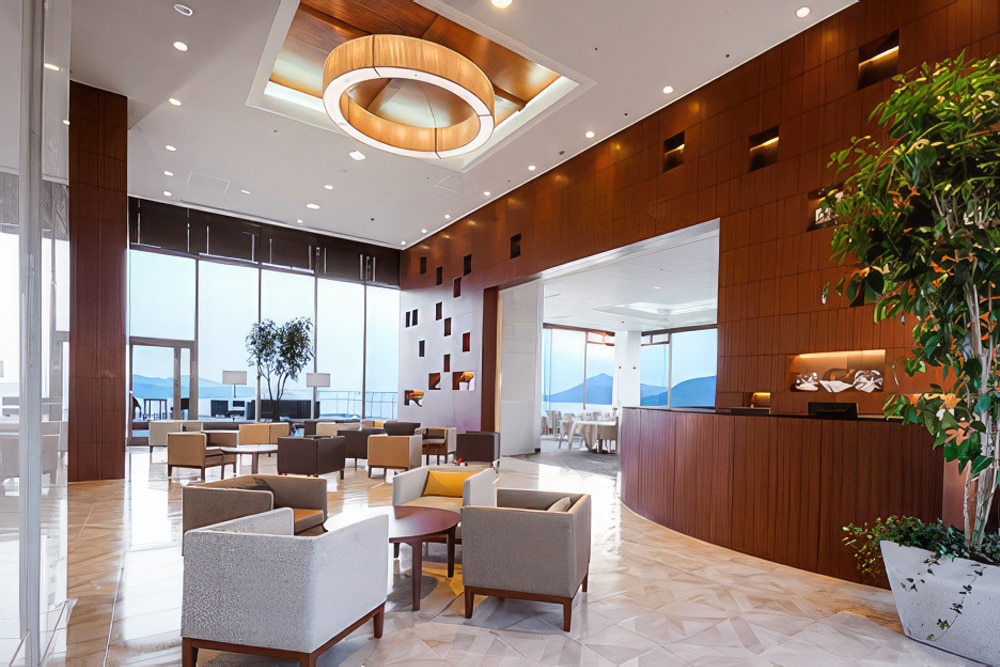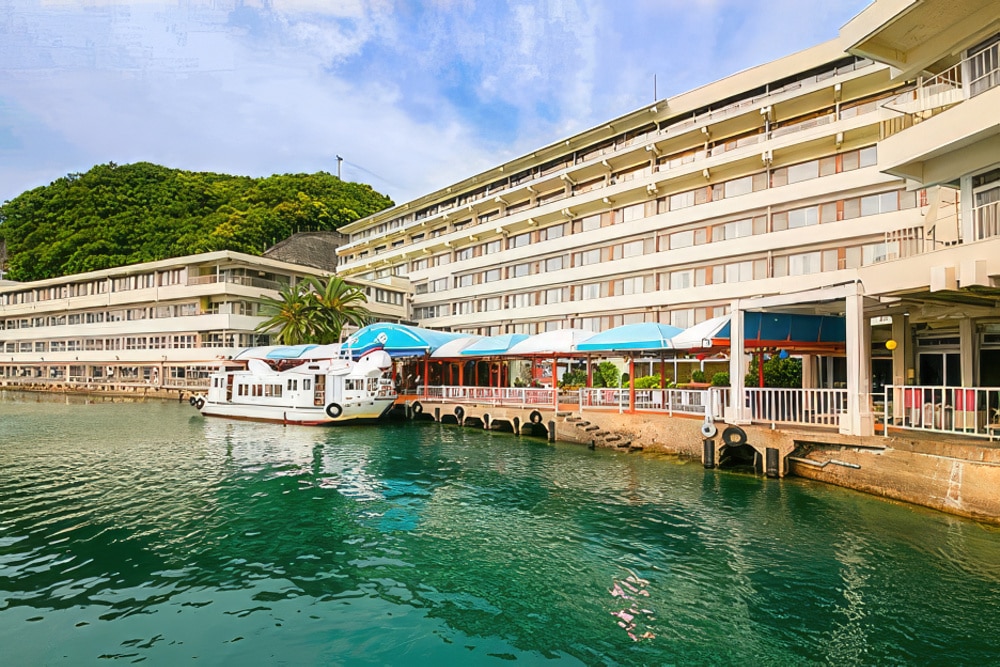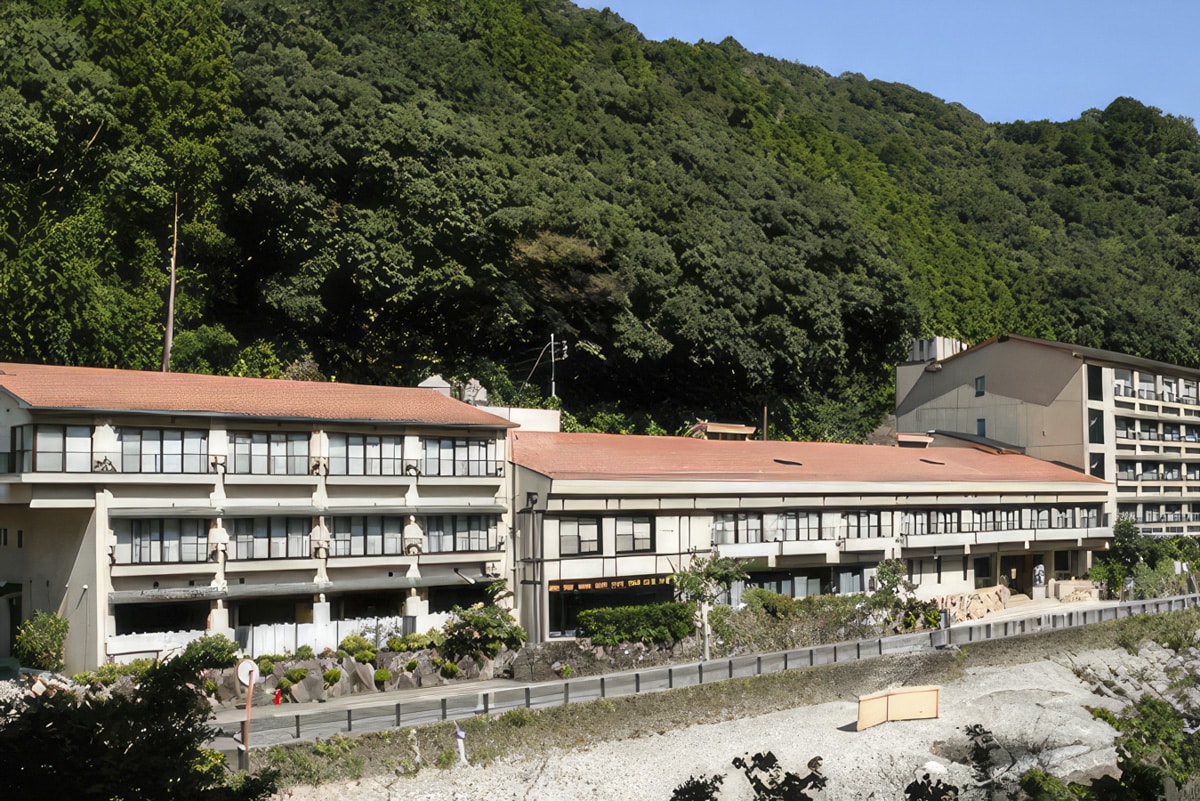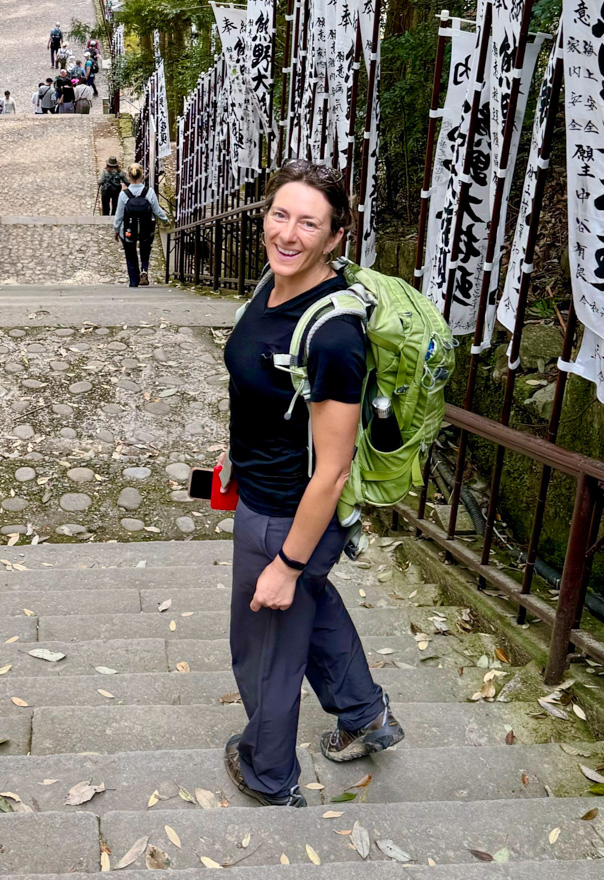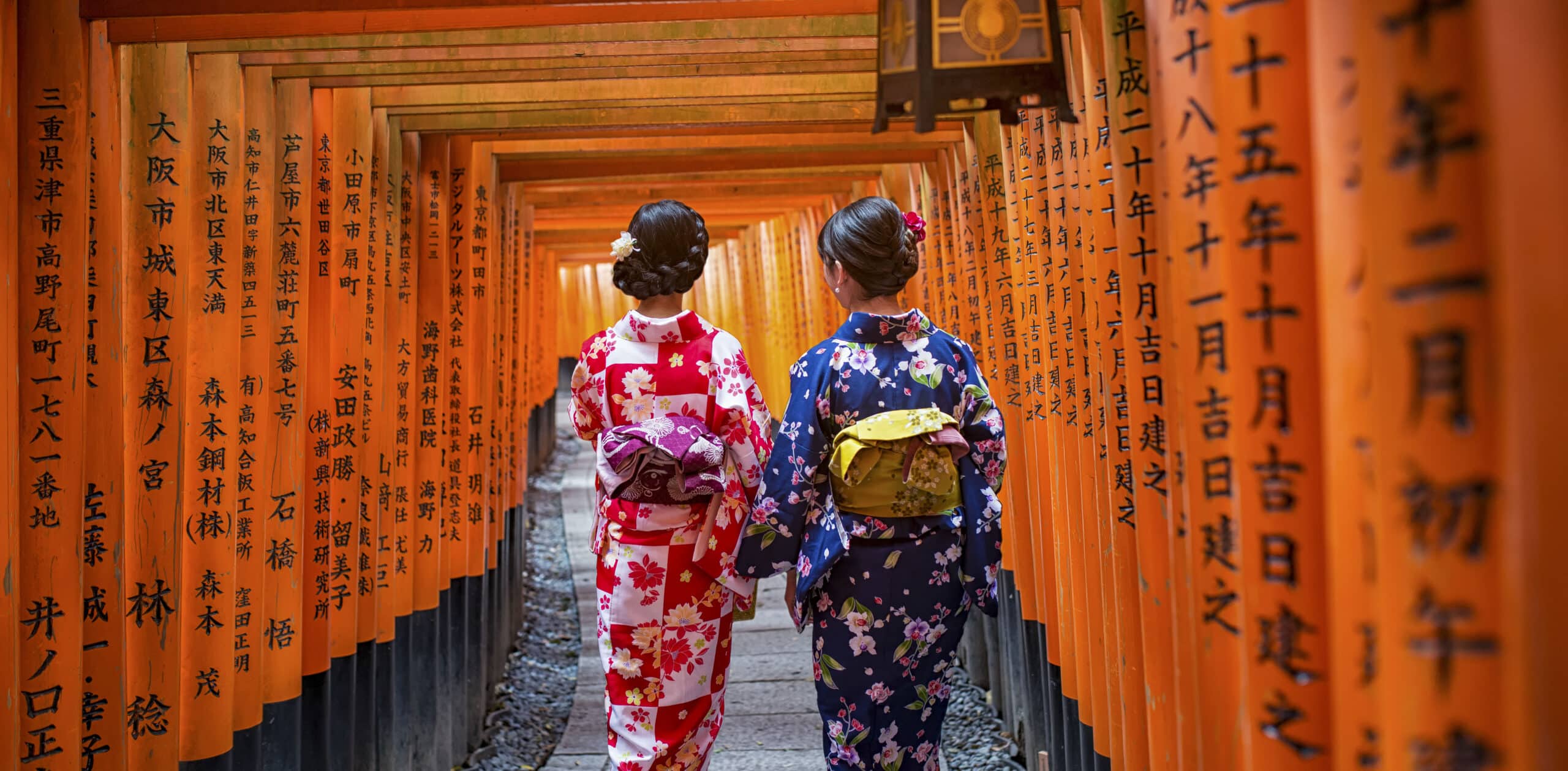
Kyoto, the Shima Peninsula, and Japan's Sacred Kumano Kodo
Shinto Shrines, Pearl Divers, and Pilgrim Trails
Overview


Arrive: Osaka, Japan
Depart: Osaka, Japan
Highlights
- Meet Kyoto's traditional artisans, dine with a geisha
- Explore the ancient pilgrim trails of the Kumano Kodo
- Visit the sacred Shinto shrines of the Shima Peninsula
- Meet the traditional female pearl divers of the Shima Peninsula
- Enjoy several overnights in traditional ryokans
Itinerary
In the rural town of Shigaraki, we visit a 5th generation indigo artisan, then continue to the Miho Museum, an architectural wonder designed by I. M. Pei. We also visit a small town known for shigaraki yaki, a ceramic style recognized as one of Japan's “six ancient kilns.” Our private dinner in Kyoto with a geisha illuminates an ancient Japanese tradition of hospitality.
Accommodations
Scroll through our signature accommodations for this trip below. Although it is highly unlikely, we may make substitutions when necessary.
What the Trip is Like
We make the most of our time in Japan. After rising and eating breakfast, we leave our ryokan for a walking tour. Daily mini-lectures by our Trip Leader help provide insights into the past and future, the history, politics, geography, and food of Japan. On some days, we visit temples and shrines, and other days, we follow the pathways of the shoguns or visit sites of breathtaking natural beauty. We ride the subways and buses, but we do most of our sightseeing on foot.
Although not physically demanding, the trip will yield greater rewards if you are in good physical condition and able to stay on your feet for 6-7 hours per day. There is much to see, and a fair amount of walking is necessary to take it all in—and you will find there are many steps to climb! Japan is a land of staircases and hills and you will enjoy the trip more if you are dressed comfortably and are in good physical condition. Please remember we will be sleeping on futons and eating at floor level, so it is important that you are able to sit down on, and get up off, the floor without much difficulty.
Japan is a blend of the traditional and modern, and our trip encompasses this unique mixture. We will stay at traditional ryokans as well as Japanese-style hotels. The quiet world of the ryokan is a venerable cultural institution—a way to experience a simple, timeless way of life. After being warmly welcomed, we trade our street shoes for slippers. Once inside, we remove our slippers as we step onto the finely woven tatami mats covering our sleeping room floors. Our rooms are spacious and pleasant with low tables and comfortable futon mattresses with quilts and blankets. Ryokans have double rooms (singles are sometimes possible). Some of our rooms will have attached toilets; at other times, we share the "down the hall" facilities. Although a few ryokans have western baths in the rooms, most have an ofuro (a Japanese-style bath).
Normally, a fresh cotton yukata (robe) is provided for each guest. These light kimonos can be worn anywhere in and around the ryokan and we often wear them to meals (make sure to wear the left side over the right). For many of our breakfasts and dinners, beautifully presented meals are served as we sit on the floor at low tables on our tatami mats.
A highlight of any visit to Japan is its superb cuisine defined by fresh ingredients and artful presentation. We will have ample opportunity to sample both familiar and new dishes. We will sample many types of Japanese food, and usually the first "bite" is with our eyes, the presentation being a tantalizing array of fresh fish, beef, vegetables, tofu, miso soup and, of course, rice, all served on individual plates and bowls of exquisite sizes, patterns, and proportions. We eat with chopsticks and are usually seated at low tables on the floor. At some ryokans, you may choose between a Japanese breakfast of fish, rice, miso soup, tofu, vegetables, pickled condiments and tea, or a western breakfast consisting of eggs, toast, salad, and coffee. Many places, however, offer only Japanese food.
During our stays in major cities, you will have some dinners and all lunches on your own, allowing you ample opportunity to sample the endless variety of Japanese food. When we are traveling, we may try an obento (box lunch), and we sample the snack foods of Japan and/or get a bowl of udon, ramen or soba noodles at one of the local spots. We often eat lunch at noodle shops, sushi bars and small neighborhood lunch spots, avoiding the infamous high-priced meals of Japan. Napkins are not used except at western-style restaurants; bring your own handkerchief.
Keep in mind that Japanese food is very different from what we are used to, and with the limited availability of American foods, your food intake will be a big part of the Japanese adventure.
Please note that vegetarian options are available, but limited. Strict vegetarian diets, vegan diets, or gluten reduced diets will be difficult to accommodate due to the pervasiveness of the fish-based stock dashi and the use of soy sauce and miso in Japanese cuisine. Gluten free cuisine will not be available.
In Japan, bathing is a time-honored tradition, a relaxing daily event. While staying in our ryokans, we will bathe as the Japanese do—using the ofuro system. In separate men and women's sides, the custom is to wash and rinse before entering the ofuro, a large tub of hot water where we can sit back with legs extended, submerged to the neck (this trip is not for the very modest!). Early Shinto was a religion of cleanliness and purification. Ritualistic bathing began during this time and has been perfected over the centuries. Either as a divine imperative or a luxury, bathing in Japan has always been regarded as more than a hygienic chore. The ofuro is the perfect way to finish a hectic day of travel. After a relaxing bath, we gather for the evening meal.
Client Testimonials
"Outstanding trip! Diverse itinerary, great introduction to Japanese artisans, very, very good look at the shrines, hiking trails, and seafaring traditions of this fascinating part of Japan."
Greg P.
San Antonio, TX
Other Trips You Might Like
Browse All TripsBook your trip today
Our Area Specialists know every detail about our tours. They will be happy to answer any questions and help you choose the journey that’s right for you. Contact us to learn more or book your trip today!
Itinerary
Submit the form below to download itinerary
Trip Levels
With more than 200 different adventures to choose from, we want to help you find the trip that’s right for you. Our Trip Level system ranks each trip in two ways: a number rating from 1 to 6 according to the activity, and general travel rigors. 1 is the easiest and 6+ the most difficult.
